I like to redraw the gyrator circuit to make the current arrows flow top-to-bottom. I find it's more intuitive and easier to understand what's going on in the top-down flow:
simulate this circuit – Schematic created using CircuitLab
This way, it's more apparent that the op amps are providing sort of "virtual floating rails" for the 3 current flows in the system (the voltages \$V_p\$ supplied by \$\text{OA}_1\$, and \$V_n\$ supplied by \$\text{OA}_2\$).
It also helps when visualizing the virtual equivalence of the op amps' input nodes (assuming they are operating in negative feedback). Is that assumption correct?
Let's start by holding \$V_{in} = V_- = V_5 = 0\$. That means the currents are 0, and both \$V_p\$ and \$V_n = 0\$.
Now if \$V_{in}\$ were to go ever-so-slightly positive, then \$\text{OA}_1\$ see a positive voltage difference between its noninverting and inverting inputs (\$V_{in}\$ and \$V_-\$), so it would drive \$V_p\$ high, by its open-loop gain (typically, at least \$10^5\$). That imputes current \$I_- = (V_p - V_-)/Z_3\$, which flows through \$Z_2\$, driving \$V_n\$ below \$V_-\$.
But (relatively) high \$V_p\$ also drives current \$I_5\$, raising the voltage at \$V_5\$, because \$Z_5\$ is grounded. As \$V_5\$ increases such that \$V_5 > V_-\$, then \$OA_2\$ drives \$V_n\$ positive, reducing the voltage drops across \$Z_3\$ and \$Z_2\$. This in turn implies a raising \$V_-\$, reducing the difference across \$OA_2\$'s inputs, and thus lowering \$V_n\$.
This cycle of mutually-stabilizing "virtual rails" output by the op amps results in the virtual equality of \$V_{in} = V_- = V_5\$.
A similar analysis at each node, assuming any (reasonable) initial voltages, will show the system stabilizes to \$V_{in} = V_- = V_5\$, meaning the op amps are both operating in mutual negative feedback.
This arrangement also helps to show the amplitude limits of the system. Just using all real, equivalent impedances (i.e., resistors), then \$V_p = 2\,V_{in}\$, and \$V_n = 0\$. If the supply voltages \$+V_{cc}, -V_{ee}\$ (or \$+V_{dd}, -V_{ss}\$) are, say, \$\pm15\,\text{V}\$, then \$V_{in}\$ must stay within \$\pm7.5\,\text{V}\$ to maintain closed-loop operation. Of course, with non-equivalent impedance values, you can't always assume \$V_p = 2\,V_{in}\$ or \$V_n = 0\$ (the \$(Z_3,Z_2)\$ and \$(Z_4,Z_5)\$ resistor ladders' ratios determine the ranges of \$V_p\$ and \$V_n\$ with respect to \$V_{in}\$).
